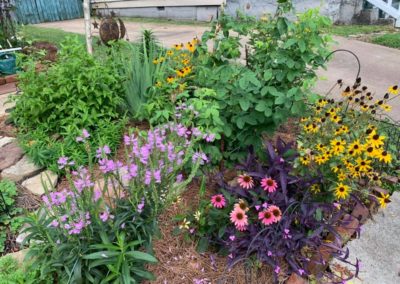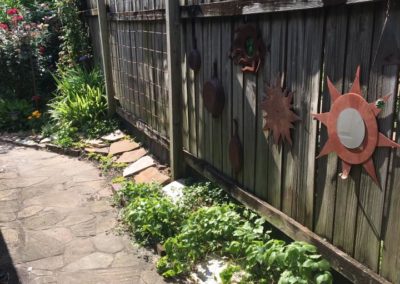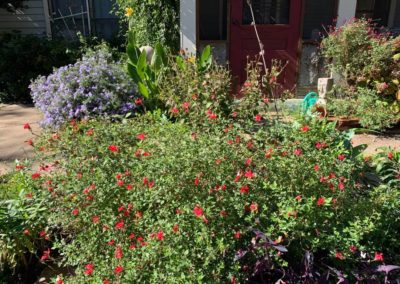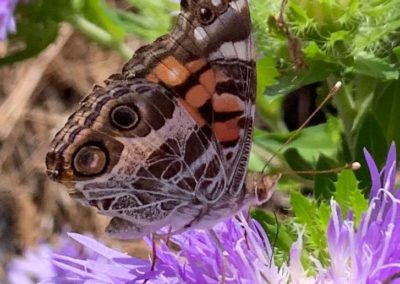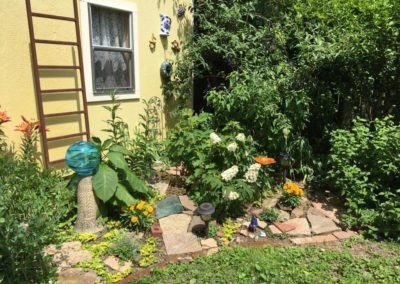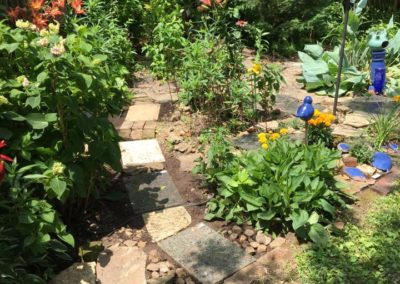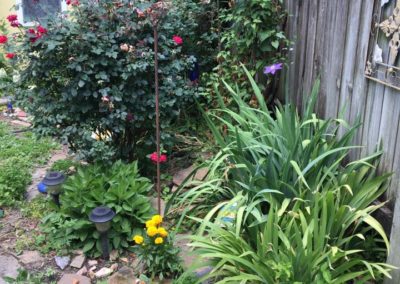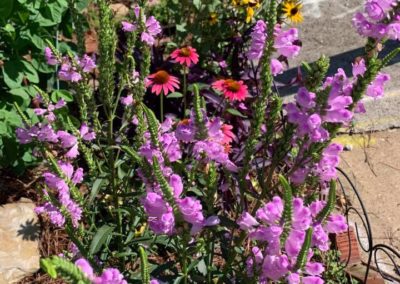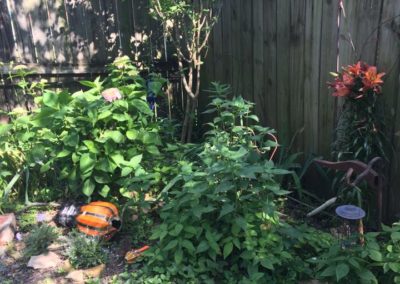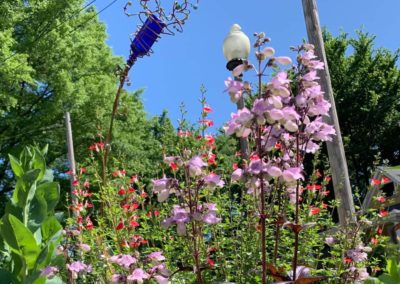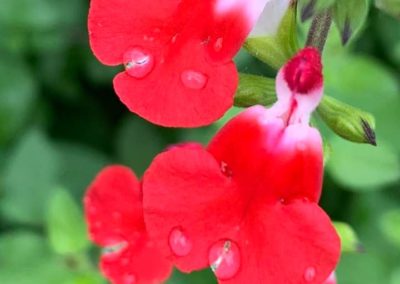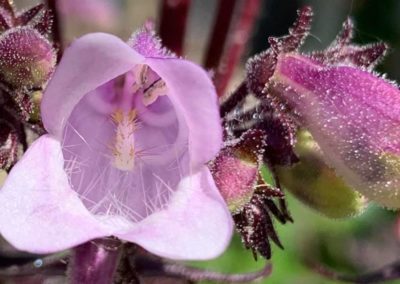
Native Sanctuary
Native Sanctuary
I have become passionate about native plants. Doug Tallamy’s talk at the 2018 CY Garden Walk felt like a clear call to action. Along with habitat loss, the proliferation of exotic plants is primarily responsible for a startling decline in native animals. “More than one-third of North America’s native bird species are at immediate risk of extinction.” In general, regional pollinators don’t recognize non-native plants as food. If there are few insects or caterpillars, there’s not enough for the birds to eat. Tallamy gave the example that during the 17 days it takes for chickadees to fledge, the adult birds feed them from 6,000 to 10,000 caterpillars! An oak tree hosts over 500 species of caterpillars, while on a scale of 1 to 10, where 10 is the best at hosting caterpillars, one site said a crepe myrtle is at best a 0.5! That’s right. Crepe myrtles are not native to our area! How did we not know this? Black capped chickadees need 70% native plants in their habitat to sustain their numbers. I was converted. I love birds. I had my crepe myrtle dug up and then planted a (mostly) native garden bed in front of my house. A native plant finder site: https://www.nwf.org/nativeplantfinder. Front garden Art piece by Richard Harper.
- Homeowners: Christine Conley (artist, singer, songwriter)
- Address: Philadelphia Street
- Circa: 2003
- Garden Age: 17 years
Garden Philosophy: Go Native!
Favorite Garden Tip: Fences are the perfect backdrop for your favorite garden art pieces. Enjoy!
- Trees: flowering dogwood, apple serviceberry, crepe myrtle, rose of Sharon, silky dogwood, holly, American plum, Chickasaw plum
- Shrubs: sweet shrub “sweet Betsy,” possumhaw viburnum, running serviceberry, butterfly bush, oak leaf hydrangea, mophead hydrangea, camelia, ninebark “summer wine,” peony, native azalea “double pleasure,” azalea, roses
- Vines: clematis, jasmine
- Perennials: salvia “hot lips,” pale penstemon, milkweed, cardinal flowers, Carolina bushpea, Culver’s root, fringed bleeding heart, echinacea: “green twister,” “Cheyenne spirit” and “hot papaya,” rudbeckia “little Henry,” bee balm, coreopsis “enchanted Eve,” sedum “dazzleberry,” phlox “daughter of Pearl,” yarrow, obedient plants, stokes aster: “color wheel” and “Peachie’s pick,” penstemon: “dark towers” and “Blackbeard,” foam flowers, phlox “Robert Poore,” Asiatic lilies, black eyed Susan, Mexican Hat, aster “Lichterman mystery,” bristly buttercup, violets, Stella d’oro lilies, toad lily, Lenten rose, giant coneflower, Missouri primrose,
Rosemary Lemonade
submitted by Suzy Askew
- 5 cups water, divided
- 1 cup sugar
- 1 cup fresh rosemary leaves, slightly crushed
- 1 cup fresh lemon juice (about 6 lemons)
STEPS:
- Mix sugar and 2 cups water in saucepan, boil gently for 5 minutes.
- Add rosemary, remove from heat, cover and let cool.
- Strain into a pitcher and add 3 cups of water and fresh lemon juice.
- Stir well and serve over ice with a lemon wedge and a rosemary sprig.
- This makes a fragrant fresh drink.
Please LIKE, SHARE and FOLLOW us on Social Media



